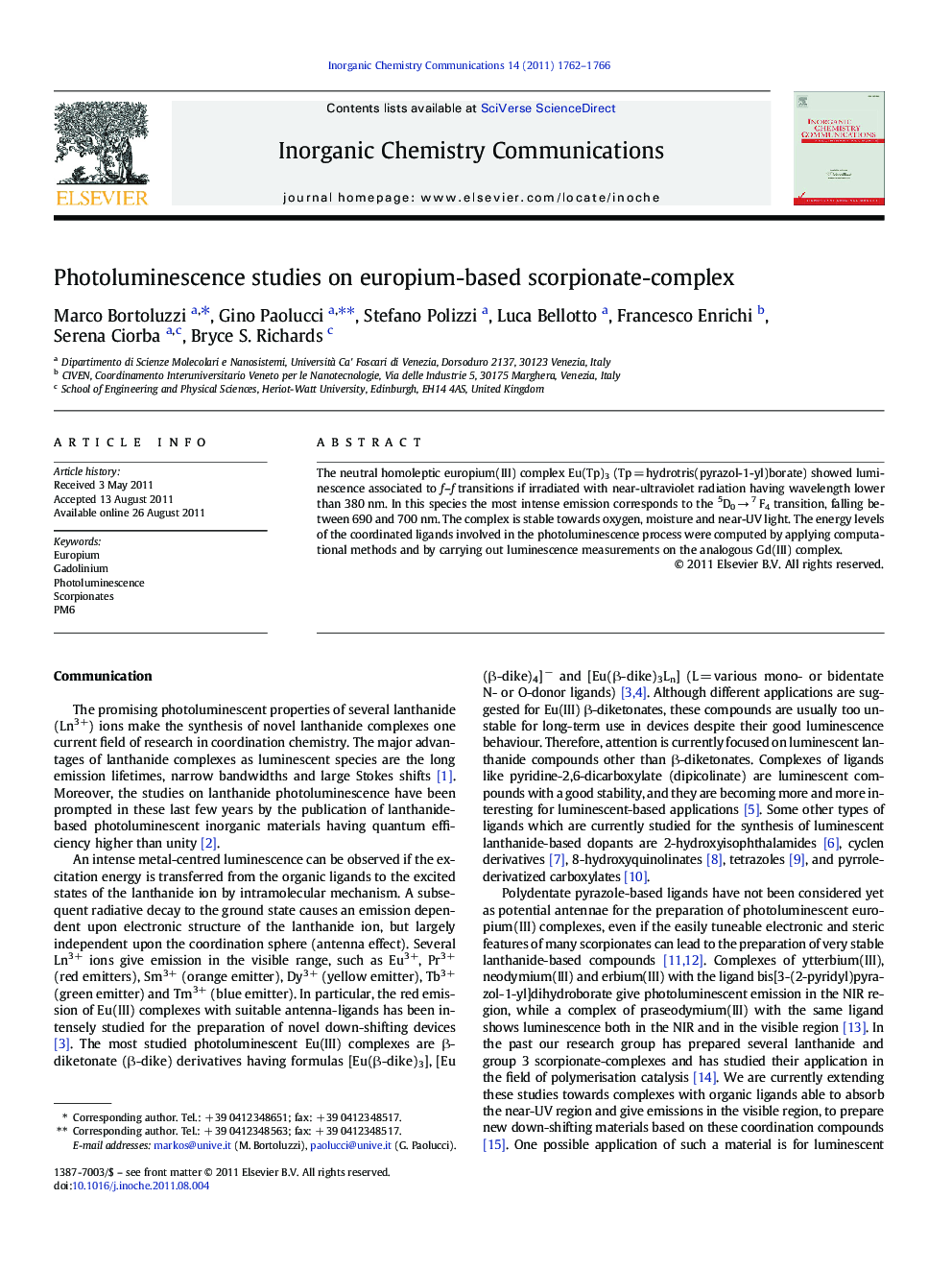| Article ID | Journal | Published Year | Pages | File Type |
|---|---|---|---|---|
| 1304166 | Inorganic Chemistry Communications | 2011 | 5 Pages |
The neutral homoleptic europium(III) complex Eu(Tp)3 (Tp = hydrotris(pyrazol-1-yl)borate) showed luminescence associated to f–f transitions if irradiated with near-ultraviolet radiation having wavelength lower than 380 nm. In this species the most intense emission corresponds to the 5D0 → 7 F4 transition, falling between 690 and 700 nm. The complex is stable towards oxygen, moisture and near-UV light. The energy levels of the coordinated ligands involved in the photoluminescence process were computed by applying computational methods and by carrying out luminescence measurements on the analogous Gd(III) complex.
Graphical abstractThe Eu(III) complex Eu(Tp)3 (Tp = hydrotris(pyrazol-1-yl)borate) gives a metal-centred red emission associated to the 5D0 → 7FJ transitions if irradiated with near-ultraviolet light. This species is stable towards oxygen, moisture and UV light. The energy levels involved in the photoluminescence have been experimentally and theoretically investigated.Figure optionsDownload full-size imageDownload as PowerPoint slideHighlights► Eu(Tp)3 (Tp = hydrotris(pyrazol-1-yl)borate) is photoluminescent. ► The most intense emission corresponds to the 5D0 → 7 F4f–f transition. ► The emission is caused by the absorption of near-UV radiation. ► The photostability of Eu(Tp)3 is good. ► Gd(Tp)3 emits in the blue-green region. ► The energy levels connected to luminescence have been investigated.
